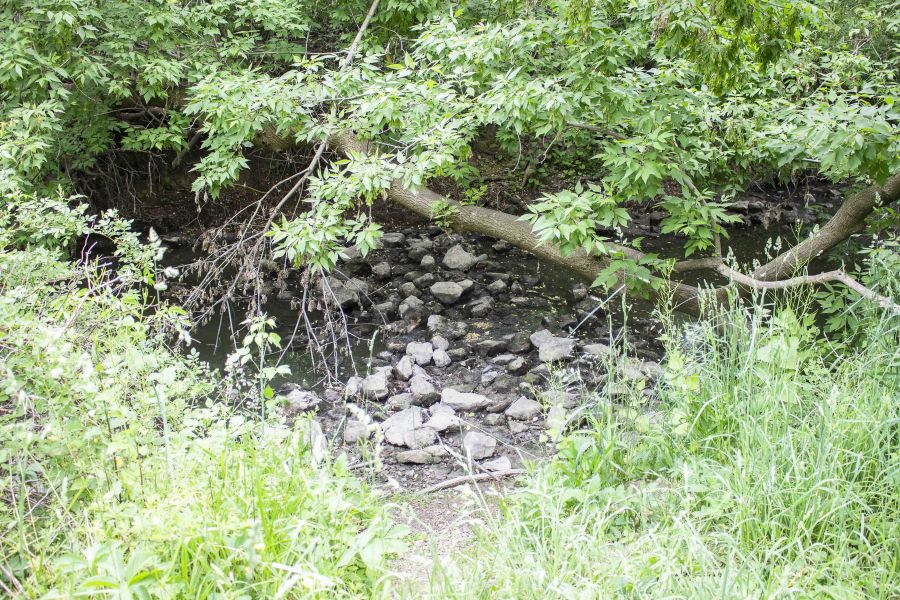Uncharacteristically low water levels this spring in Four Mile Creek are likely a result of several compounding factors, including lack of rain.
This year there has been less precipitation than usual.
In addition, irrigation and drainage staff confirmed that the Virgil Pond, between Line 2 and Line 3, has been draining for about a week, says Brett Ruck, the Town of Niagara-on-the-Lake's environmental services supervisor.
Unfortunately, it appears that boards were removed from the pond and used as firewood. Typically, these boards help to control the timing of water releases from the reservoir.
When such barriers are compromised, large volumes of water rush quickly to the lake and leave little flow behind in the creek. The town has been in contact with the Niagara Peninsula Conservation Authority, which intends to install a more robust barrier so that the pond volume can be replenished.
So, irrigation practices, warming climate and tampering with Four Mile Creek's storage reservoirs have likely further suppressed the creek's low summer flow.
In response to notably low water levels in the creek, several members of the NOTL 4 All Facebook group expressed concerns for local wildlife. Historically, water levels in this creek do tend to be quite low between May and September when some flow is diverted for irrigation purposes.
An NPCA water availability study found the flow rate to be approximately 0.1 cubic metres per second during the summer, even back in 2009. These months also tend to be the warmest, so evaporation rates are higher at this time of year.
The creek provides habitat for a variety of species, including breeding grounds for American toads and western chorus frogs. Some areas of the creek even support rarer species, including the red-spotted newt or the marsh wren.
Four Mile Creek is also home to many more “generalist” birds, like red-winged blackbirds, that are comfortable in several types of floodplain environments.
Historically, land-use changes have made the creek uninhabitable for brook trout.
As natural riverbank environments were transformed into urban areas, these cold-water fish were not able to survive when destabilized banks eroded and produced higher quantities of debris in the water.
Environmental columnist Kyra Simone writes the Keeping it Green column for The Lake Report.











